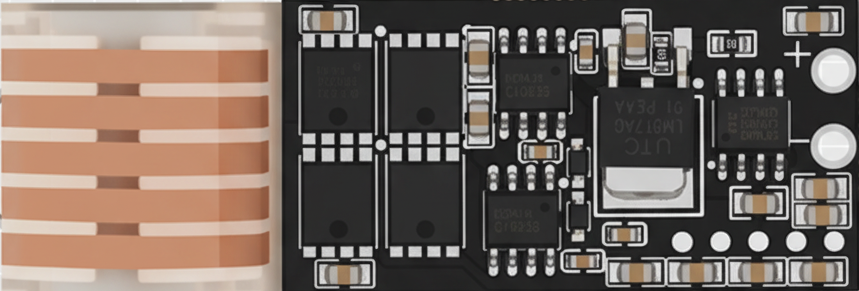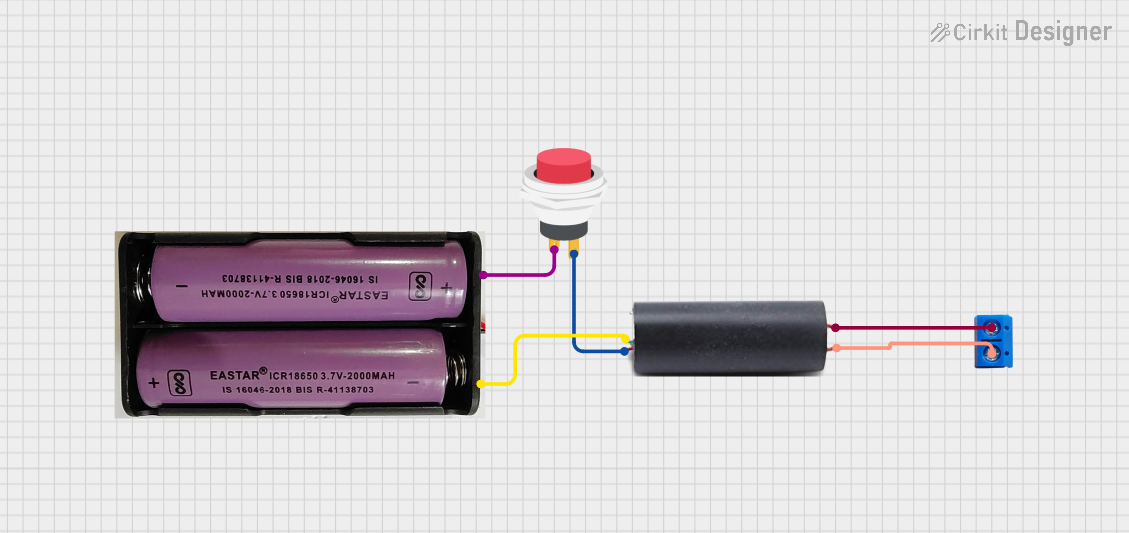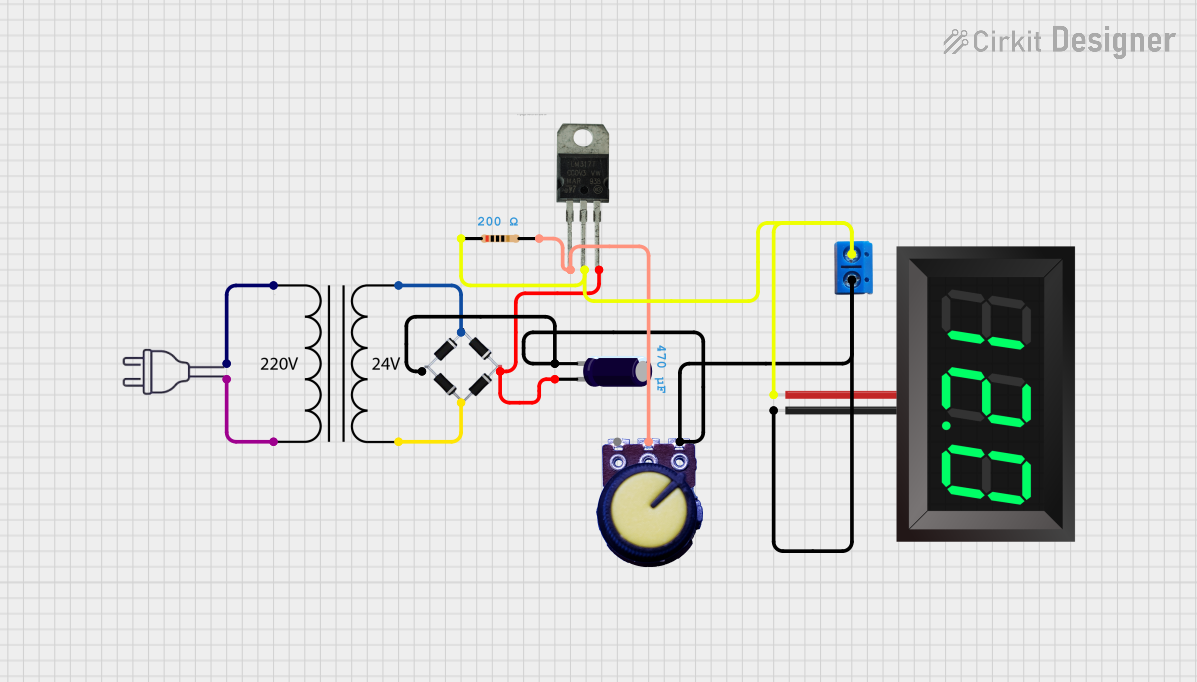
How to Use 20KV High Frequency AC High Voltage Generator: Examples, Pinouts, and Specs

 Design with 20KV High Frequency AC High Voltage Generator in Cirkit Designer
Design with 20KV High Frequency AC High Voltage Generator in Cirkit DesignerIntroduction
The 20KV High Frequency AC High Voltage Generator is a specialized electronic device designed to produce high voltage alternating current (AC) at a frequency of 20 kHz. This component is widely used in applications requiring high voltage, such as plasma generation, dielectric testing, and various high voltage experiments. Its compact design and high efficiency make it a popular choice for both laboratory and industrial use.
Explore Projects Built with 20KV High Frequency AC High Voltage Generator

 Open Project in Cirkit Designer
Open Project in Cirkit Designer
 Open Project in Cirkit Designer
Open Project in Cirkit Designer
 Open Project in Cirkit Designer
Open Project in Cirkit Designer
 Open Project in Cirkit Designer
Open Project in Cirkit DesignerExplore Projects Built with 20KV High Frequency AC High Voltage Generator

 Open Project in Cirkit Designer
Open Project in Cirkit Designer
 Open Project in Cirkit Designer
Open Project in Cirkit Designer
 Open Project in Cirkit Designer
Open Project in Cirkit Designer
 Open Project in Cirkit Designer
Open Project in Cirkit DesignerCommon Applications and Use Cases
- Plasma Generation: Used in plasma cutters, ozone generators, and other plasma-based devices.
- Dielectric Testing: Ideal for testing the insulation strength of materials.
- High Voltage Experiments: Suitable for educational and research purposes in physics and electronics.
- Electrostatic Applications: Used in devices like electrostatic precipitators and ionizers.
Technical Specifications
The following table outlines the key technical details of the 20KV High Frequency AC High Voltage Generator:
| Parameter | Specification |
|---|---|
| Input Voltage | 12V DC |
| Input Current | 2A (typical) |
| Output Voltage | 20,000V (20kV) AC |
| Output Frequency | 20 kHz |
| Power Consumption | 24W |
| Dimensions | 70mm x 40mm x 30mm |
| Weight | 150g |
| Operating Temperature | -10°C to 50°C |
| Insulation Resistance | ≥ 10MΩ |
Pin Configuration and Descriptions
The generator typically has the following input and output connections:
| Pin/Connection | Description |
|---|---|
| Input (+) | Positive DC input (12V DC) |
| Input (-) | Negative DC input (Ground) |
| Output (HV1) | High voltage AC output terminal 1 |
| Output (HV2) | High voltage AC output terminal 2 |
Note: The high voltage output terminals (HV1 and HV2) are not polarized, as the output is AC.
Usage Instructions
How to Use the Component in a Circuit
- Power Supply: Connect a stable 12V DC power supply to the input terminals. Ensure the power supply can provide at least 2A of current.
- High Voltage Output: Connect the high voltage output terminals (HV1 and HV2) to the desired load or application. Use appropriate high voltage insulation to prevent arcing or accidental contact.
- Operation: Once powered, the generator will produce a high voltage AC output at 20 kHz. Ensure the load is compatible with the output voltage and frequency.
Important Considerations and Best Practices
- Safety First: The output voltage is extremely high and can cause serious injury or damage. Always handle the component with care and use proper insulation.
- Heat Dissipation: The generator may heat up during operation. Ensure adequate ventilation or use a heat sink if necessary.
- Load Compatibility: Verify that the connected load can handle the high voltage and frequency output.
- Avoid Short Circuits: Never short the high voltage output terminals, as this can damage the generator and pose a safety hazard.
- Arduino Integration: While this component is not directly controlled by an Arduino, it can be used in conjunction with an Arduino to control the input power (e.g., via a relay or MOSFET).
Example: Controlling the Generator with an Arduino UNO
Below is an example of using an Arduino UNO to control the generator's power via a relay module:
// Define the relay control pin
const int relayPin = 7;
void setup() {
// Set the relay pin as an output
pinMode(relayPin, OUTPUT);
// Ensure the relay is off at startup
digitalWrite(relayPin, LOW);
}
void loop() {
// Turn on the generator by activating the relay
digitalWrite(relayPin, HIGH);
delay(5000); // Keep the generator on for 5 seconds
// Turn off the generator
digitalWrite(relayPin, LOW);
delay(5000); // Wait for 5 seconds before turning it on again
}
Note: Ensure the relay module is rated for the input voltage and current of the generator.
Troubleshooting and FAQs
Common Issues and Solutions
| Issue | Possible Cause | Solution |
|---|---|---|
| No output voltage | Insufficient input voltage or current | Verify the power supply provides 12V DC and at least 2A. |
| Overheating during operation | Poor ventilation or excessive load | Ensure proper ventilation and reduce the load if necessary. |
| Arcing or sparks near output terminals | Inadequate insulation or short circuit | Use high voltage insulation and check for shorts. |
| Output voltage lower than expected | Load impedance too low | Ensure the load impedance matches the generator's specifications. |
FAQs
Can I use a power supply with a voltage higher than 12V?
No, using a higher input voltage can damage the generator. Always use a 12V DC power supply.Is the output voltage adjustable?
No, the output voltage is fixed at 20kV AC.Can this generator be used continuously?
While the generator is designed for high efficiency, prolonged continuous use may cause overheating. Use it intermittently or ensure proper cooling.What precautions should I take when handling this component?
Always disconnect the power supply before making any connections. Use insulated tools and avoid direct contact with the high voltage output terminals.
By following this documentation, users can safely and effectively utilize the 20KV High Frequency AC High Voltage Generator in their projects and experiments.